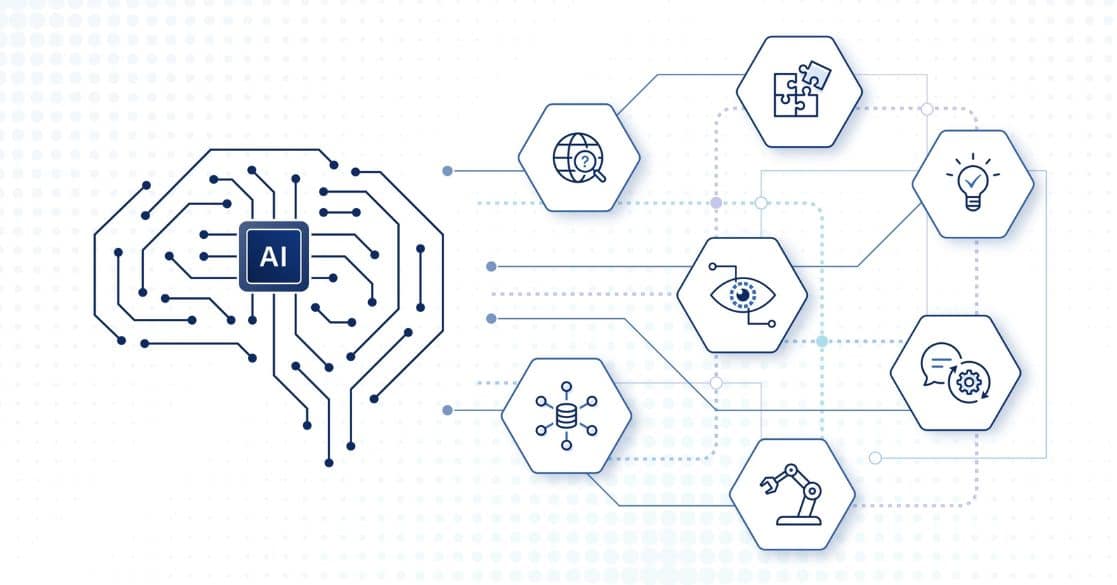- What is Ridge regression?
- Ridge Regression Models
- Standardization
- Bias and variance trade-off
- Assumptions of Ridge Regressions
- Upload Required Libraries
- Scaling the variables as continuous variables has different weightage
- Train-Test Split
- Linear Regression Model
- Difference Between Ridge Regression Vs Lasso Regression
- Ridge Regression in Machine Learning
- Regularization
- Rideg Regression FAQs
Contributed by: Prashanth Ashok
What is Ridge regression?
Ridge regression is a model-tuning method that is used to analyze any data that suffers from multicollinearity. This method performs L2 regularization. When the issue of multicollinearity occurs, least-squares are unbiased, and variances are large, this results in predicted values being far away from the actual values.
The cost function for ridge regression:
Min(||Y – X(theta)||^2 + λ||theta||^2)
Lambda is the penalty term. λ given here is denoted by an alpha parameter in the ridge function. So, by changing the values of alpha, we are controlling the penalty term. The higher the values of alpha, the bigger is the penalty and therefore the magnitude of coefficients is reduced.
- It shrinks the parameters. Therefore, it is used to prevent multicollinearity
- It reduces the model complexity by coefficient shrinkage
- Check out the free course on regression analysis.
Ridge Regression Models
For any type of regression machine learning model, the usual regression equation forms the base which is written as:
Y = XB + e
Where Y is the dependent variable, X represents the independent variables, B is the regression coefficients to be estimated, and e represents the errors are residuals.
Once we add the lambda function to this equation, the variance that is not evaluated by the general model is considered. After the data is ready and identified to be part of L2 regularization, there are steps that one can undertake.
Standardization
In ridge regression, the first step is to standardize the variables (both dependent and independent) by subtracting their means and dividing by their standard deviations. This causes a challenge in notation since we must somehow indicate whether the variables in a particular formula are standardized or not. As far as standardization is concerned, all ridge regression calculations are based on standardized variables. When the final regression coefficients are displayed, they are adjusted back into their original scale. However, the ridge trace is on a standardized scale.
Also Read: Support Vector Regression in Machine Learning
Bias and variance trade-off
Bias and variance trade-off is generally complicated when it comes to building ridge regression models on an actual dataset. However, following the general trend which one needs to remember is:
- The bias increases as λ increases.
- The variance decreases as λ increases.
Assumptions of Ridge Regressions
The assumptions of ridge regression are the same as those of linear regression: linearity, constant variance, and independence. However, as ridge regression does not provide confidence limits, the distribution of errors to be normal need not be assumed.
Now, let’s take an example of a linear regression problem and see how ridge regression if implemented, helps us to reduce the error.
We shall consider a data set on Food restaurants trying to find the best combination of food items to improve their sales in a particular region.
Upload Required Libraries
import numpy as np
import pandas as pd
import os
import seaborn as sns
from sklearn.linear_model import LinearRegression
import matplotlib.pyplot as plt
import matplotlib.style
plt.style.use('classic')
import warnings
warnings.filterwarnings("ignore")
df = pd.read_excel("food.xlsx")
After conducting all the EDA on the data, and treatment of missing values, we shall now go ahead with creating dummy variables, as we cannot have categorical variables in the dataset.
df =pd.get_dummies(df, columns=cat,drop_first=True)
Where columns=cat is all the categorical variables in the data set.
After this, we need to standardize the data set for the Linear Regression method.
Scaling the variables as continuous variables has different weightage
#Scales the data. Essentially returns the z-scores of every attribute
from sklearn.preprocessing import StandardScaler
std_scale = StandardScaler()
std_scale
df['week'] = std_scale.fit_transform(df[['week']])
df['final_price'] = std_scale.fit_transform(df[['final_price']])
df['area_range'] = std_scale.fit_transform(df[['area_range']])
Train-Test Split
# Copy all the predictor variables into X dataframe
X = df.drop('orders', axis=1)
# Copy target into the y dataframe. Target variable is converted in to Log.
y = np.log(df[['orders']])
# Split X and y into training and test set in 75:25 ratio
from sklearn.model_selection import train_test_split
X_train, X_test, y_train, y_test = train_test_split(X, y, test_size=0.25 , random_state=1)
Linear Regression Model
Also Read: What is Linear Regression?
# invoke the LinearRegression function and find the bestfit model on training data
regression_model = LinearRegression()
regression_model.fit(X_train, y_train)
# Let us explore the coefficients for each of the independent attributes
for idx, col_name in enumerate(X_train.columns):
print("The coefficient for {} is {}".format(col_name, regression_model.coef_[0][idx]))
The coefficient for week is -0.0041068045722690814
The coefficient for final_price is -0.40354286519747384
The coefficient for area_range is 0.16906454326841025
The coefficient for website_homepage_mention_1.0 is 0.44689072858872664
The coefficient for food_category_Biryani is -0.10369818094671146
The coefficient for food_category_Desert is 0.5722054451619581
The coefficient for food_category_Extras is -0.22769824296095417
The coefficient for food_category_Other Snacks is -0.44682163212660775
The coefficient for food_category_Pasta is -0.7352610382529601
The coefficient for food_category_Pizza is 0.499963614474803
The coefficient for food_category_Rice Bowl is 1.640603292571774
The coefficient for food_category_Salad is 0.22723622749570868
The coefficient for food_category_Sandwich is 0.3733070983152591
The coefficient for food_category_Seafood is -0.07845778484039663
The coefficient for food_category_Soup is -1.0586633401722432
The coefficient for food_category_Starters is -0.3782239478810047
The coefficient for cuisine_Indian is -1.1335822602848094
The coefficient for cuisine_Italian is -0.03927567006223066
The coefficient for center_type_Gurgaon is -0.16528108967295807
The coefficient for center_type_Noida is 0.0501474731039986
The coefficient for home_delivery_1.0 is 1.026400462237632
The coefficient for night_service_1 is 0.0038398863634691582
#checking the magnitude of coefficients
from pandas import Series, DataFrame
predictors = X_train.columns
coef = Series(regression_model.coef_.flatten(), predictors).sort_values()
plt.figure(figsize=(10,8))
coef.plot(kind='bar', title='Model Coefficients')
plt.show()
Variables showing Positive effect on regression model are food_category_Rice Bowl, home_delivery_1.0, food_category_Desert,food_category_Pizza ,website_homepage_mention_1.0, food_category_Sandwich, food_category_Salad and area_range – these factors highly influencing our model.
Difference Between Ridge Regression Vs Lasso Regression
| Aspect | Ridge Regression | Lasso Regression |
| Regularization Approach | Adds penalty term proportional to square of coefficients | Adds penalty term proportional to absolute value of coefficients |
| Coefficient Shrinkage | Coefficients shrink towards but never exactly to zero | Some coefficients can be reduced exactly to zero |
| Effect on Model Complexity | Reduces model complexity and multicollinearity | Results in simpler, more interpretable models |
| Handling Correlated Inputs | Handles correlated inputs effectively | Can be inconsistent with highly correlated features |
| Feature Selection Capability | Limited | Performs feature selection by reducing some coefficients to zero |
| Preferred Usage Scenarios | All features assumed relevant or dataset has multicollinearity | When parsimony is advantageous, especially in high-dimensional datasets |
| Decision Factors | Nature of data, desired model complexity, multicollinearity | Nature of data, desire for feature selection, potential inconsistency with correlated features |
| Selection Process | Often determined through cross-validation | Often determined through cross-validation and comparative model performance assessment |
Ridge Regression in Machine Learning
- Ridge regression is a key technique in machine learning, indispensable for creating robust models in scenarios prone to overfitting and multicollinearity. This method modifies standard linear regression by introducing a penalty term proportional to the square of the coefficients, which proves particularly useful when dealing with highly correlated independent variables. Among its primary benefits, ridge regression effectively reduces overfitting through added complexity penalties, manages multicollinearity by balancing effects among correlated variables, and enhances model generalization to improve performance on unseen data.
- The implementation of ridge regression in practical settings involves the crucial step of selecting the right regularization parameter, commonly known as lambda. This selection, typically done using cross-validation techniques, is vital for balancing the bias-variance tradeoff inherent in model training. Ridge regression enjoys widespread support across various machine learning libraries, with Python’s
scikit-learnbeing a notable example. Here, implementation entails defining the model, setting the lambda value, and employing built-in functions for fitting and predictions. Its utility is particularly notable in sectors like finance and healthcare analytics, where precise predictions and robust model construction are paramount. Ultimately, ridge regression’s capacity to improve accuracy and handle complex data sets solidifies its ongoing importance in the dynamic field of machine learning.
The higher the value of the beta coefficient, the higher is the impact.
- Dishes like Rice Bowl, Pizza, Desert with a facility like home delivery and website_homepage_mention plays an important role in demand or number of orders being placed in high frequency.
- Variables showing negative effect on regression model for predicting restaurant orders: cuisine_Indian,food_category_Soup , food_category_Pasta , food_category_Other_Snacks.
- Final_price has a negative effect on the order – as expected.
- Dishes like Soup, Pasta, other_snacks, Indian food categories hurt model prediction on the number of orders being placed at restaurants, keeping all other predictors constant.
- Some variables which are hardly affecting model prediction for order frequency are week and night_service.
- Through the model, we are able to see object types of variables or categorical variables are more significant than continuous variables.
Also Read: Introduction to Regular Expression in Python
Regularization
- Value of alpha, which is a hyperparameter of Ridge, which means that they are not automatically learned by the model instead they have to be set manually. We run a grid search for optimum alpha values
- To find optimum alpha for Ridge Regularization we are applying GridSearchCV
from sklearn.linear_model import Ridge
from sklearn.model_selection import GridSearchCV
ridge=Ridge()
parameters={'alpha':[1e-15,1e-10,1e-8,1e-3,1e-2,1,5,10,20,30,35,40,45,50,55,100]}
ridge_regressor=GridSearchCV(ridge,parameters,scoring='neg_mean_squared_error',cv=5)
ridge_regressor.fit(X,y)
print(ridge_regressor.best_params_)
print(ridge_regressor.best_score_)
{'alpha': 0.01}
-0.3751867421112124
The negative sign is because of the known error in the Grid Search Cross Validation library, so ignore the negative sign.
predictors = X_train.columns
coef = Series(ridgeReg.coef_.flatten(),predictors).sort_values()
plt.figure(figsize=(10,8))
coef.plot(kind='bar', title='Model Coefficients')
plt.show()
From the above analysis we can decide that the final model can be defined as:
Orders = 4.65 + 1.02home_delivery_1.0 + .46 website_homepage_mention_1 0+ (-.40* final_price) +.17area_range + 0.57food_category_Desert + (-0.22food_category_Extras) + (-0.73food_category_Pasta) + 0.49food_category_Pizza + 1.6food_category_Rice_Bowl + 0.22food_category_Salad + 0.37food_category_Sandwich + (-1.05food_category_Soup) + (-0.37food_category_Starters) + (-1.13cuisine_Indian) + (-0.16center_type_Gurgaon)
Top 5 variables influencing regression model are:
- food_category_Rice Bowl
- home_delivery_1.0
- food_category_Pizza
- food_category_Desert
- website_homepage_mention_1
The higher the beta coefficient, the more significant is the predictor. Hence, with certain level model tuning, we can find out the best variables that influence a business problem.
If you found this blog helpful and want to learn more about such concepts, you can join Great Learning Academy’s free online courses today.
Rideg Regression FAQs
Ridge regression is a linear regression method that adds a bias to reduce overfitting and improve prediction accuracy.
Unlike ordinary least squares, ridge regression includes a penalty on the magnitude of coefficients to reduce model complexity.
Use ridge regression when dealing with multicollinearity or when there are more predictors than observations.
The regularization parameter controls the extent of coefficient shrinkage, influencing model simplicity.
While primarily for linear relationships, ridge regression can include polynomial terms for non-linearities.
Most statistical software offers built-in functions for ridge regression, requiring variable specification and parameter value.
The best parameter is often found through cross-validation, using techniques like grid or random search.
It includes all predictors, which can complicate interpretation, and choosing the optimal parameter can be challenging.









